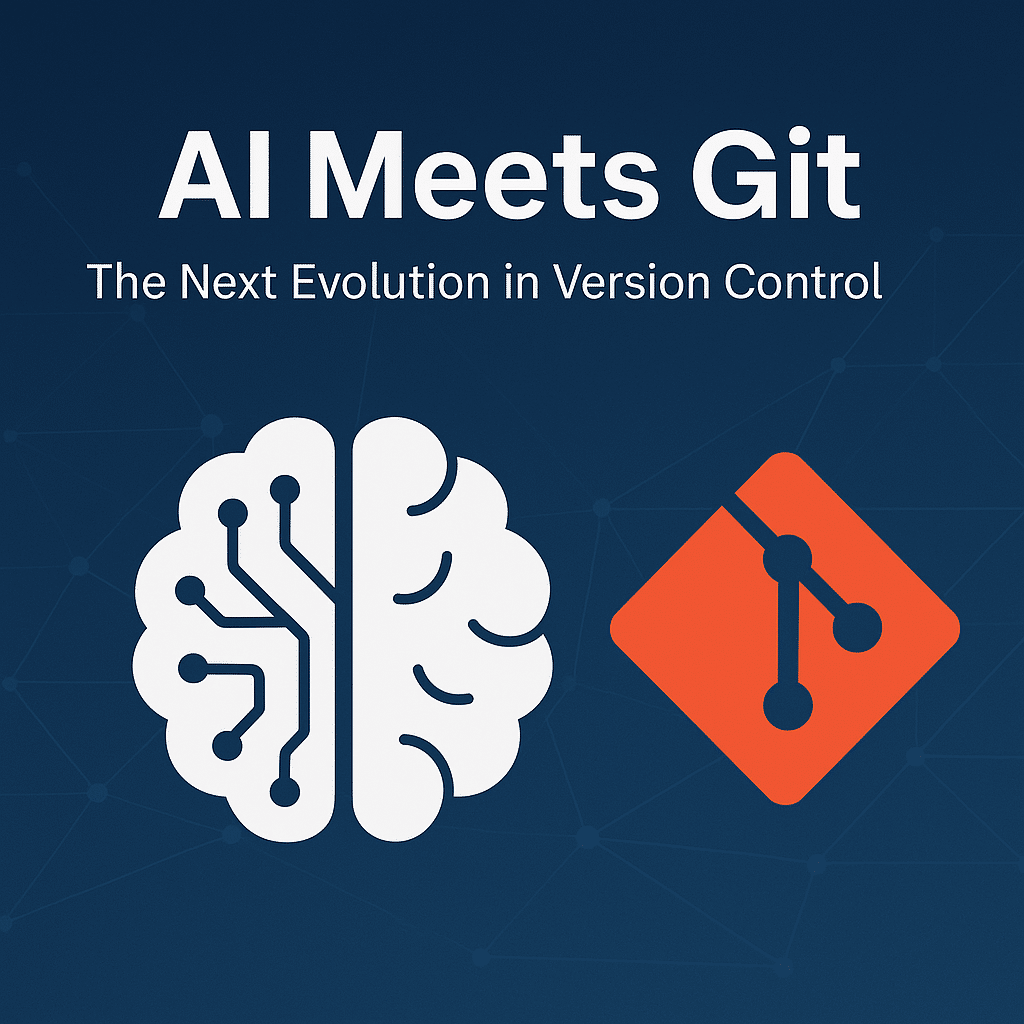
AI Meets Git: The Rise of AI Version Control
Introduction: The Old Git vs The New Git
Let’s be honest—Git is amazing, but it’s not always friendly. If you’ve ever stared at a merge conflict at 2 AM or tried to decipher a commit message like fix-stuff, you know what we mean. Git’s power is undeniable, but it’s also a tool that demands precision, memory, and a fair bit of patience.
Now imagine if Git had a smart assistant. One that understood your code, helped you write better commit messages, resolved conflicts with a click, and even reviewed your pull requests before your teammate had a chance. That’s exactly what AI version control is starting to offer.
In this blog, we’ll explore how artificial intelligence is giving Git a human touch—and how you can take advantage of AI version control to work smarter, not harder.
Table of Contents
1. Smart Commit Messages: Say Goodbye to fixed bug
Let’s face it—writing good commit messages isn’t fun. It takes time, thought, and most of us just want to push code and move on. That’s why commit logs often end up being vague, repetitive, or downright useless.
Enter AI version control tools like OpenCommit and GitHub Copilot Labs. These tools read your code changes and suggest meaningful, human-like commit messages that explain:
- What changed
- Why it changed
- What impact it has
Example:
Instead of:fix bug,
AI suggests:Fix issue where OAuth token expired prematurely, preventing login after session timeout.
It’s like having a technical copywriter working alongside you, making your Git history clearer and way more useful.
2. AI-Powered Pull Requests: Your New Code Buddy
Pull requests are where teamwork happens—but reviewing code can be time-consuming. We’ve all skimmed over changes just to hit “approve” before a deadline. That’s where AI version control systems can shine.
With tools like CodiumAI, ReviewGPT, and Cody, you can:
- Get automatic feedback on your code
- Catch security issues and bad patterns early
- Receive suggestions for improvements
Example:
You push a PR with a new login route. AI flags that your input validation is weak and recommends stronger sanitization.
It’s not about replacing your teammates—it’s about making their job easier and your code stronger.
3. AI and Merge Conflicts: Peace at Last
Merge conflicts can ruin your day. They slow you down, break your rhythm, and sometimes introduce bugs when handled wrong.
AI version control is stepping up to make this better. Tools like GitHub Copilot Labs and research from Meta like MergeBERT can:
- Understand the meaning behind both code branches
- Suggest smart ways to merge changes
- Automatically resolve simple conflicts
Think of it like a teammate who understands both sides of the argument—and just helps everyone get along.
4. Changelogs That Write Themselves
Every developer dreads writing release notes. It’s repetitive, boring, and easy to get wrong. But stakeholders love clear changelogs, and they’re essential for open source projects.
AI version control tools can take your Git history and:
- Group changes into features, fixes, and improvements
- Generate summaries in plain English
- Automate changelogs in your CI/CD pipeline
Example:
“✅ Fixed: OAuth login bug.
🚀 Feature: Added multi-factor authentication.”
It’s like your project just got a built-in product manager.
5. Git That Sees the Future
What if Git could predict problems before they happen? That’s what predictive AI version control is aiming for.
In the near future, AI might:
- Warn you about likely merge conflicts before you commit
- Recommend better branch strategies for faster releases
- Suggest smaller, cleaner commits to make debugging easier
Some teams are already building in-house AI bots that analyze Git history to:
- Track developer performance
- Spot project bottlenecks
- Improve onboarding by surfacing relevant past decisions
Your version control tool could soon act like a proactive project manager.
6. Be Careful—AI Isn’t Perfect
With all the hype, it’s easy to forget that AI has its flaws. It can make mistakes, misread context, or suggest insecure solutions. It doesn’t know your business logic—and sometimes it’ll try to fake it.
That’s why it’s important to:
- Always review AI suggestions
- Keep human oversight in your workflows
- Stay transparent about when and where AI was used
AI version control should be an assistant, not your boss.
7. Want to Try It? Start Here 👇
Ready to add some AI magic to your Git workflow? Here are a few AI version control tools to explore:
| Tool | What It Does | Try It |
|---|---|---|
| GitHub Copilot Labs | Suggests commit messages, resolves merges | Visit |
| OpenCommit | Auto-generates commit messages | Visit |
| ReviewGPT | AI-assisted PR reviews | Visit |
| Cody (Sourcegraph) | Context-aware code assistant | Visit |
| CodiumAI | Recommends test cases, suggests improvements | Visit |
Start small—maybe just with commit messages. Then experiment with reviews or merge suggestions as your confidence grows.
Wrapping Up: Git Just Got a Whole Lot Smarter
Version control has always been about managing code history. But now, it’s becoming something more—something smarter. AI version control is helping developers write clearer messages, avoid costly mistakes, and ship better code faster.
If you’re tired of Git getting in your way, maybe it’s time to let AI give you a hand.
Because the future of version control isn’t just efficient—it’s intelligent.
